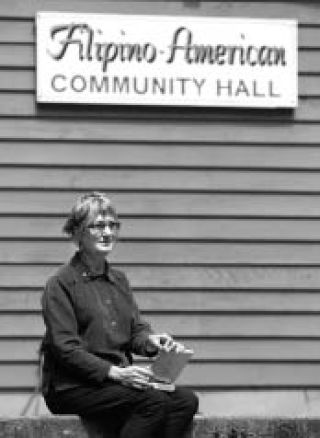As a child, Mary Dombrowski developed a fascination with the Philippines when she played with the traditional hats her father, once stationed there, had brought home.
As an adult and a filmmaker, she decided to deepen her approach and make a documentary about the Filipino-Americans on the island she called home.
“I knew there was a story to be told about the Filipino-American community here – their patriotism, their hospitality, and their service,” Dombrowski said.
Her finished product, titled, “Many Stories: One Community, Filipino-Americans on Bainbridge Island” will premiere on Sunday afternoon at the Filipino-American Hall, later to be presented in three parts on Bainbridge Island Television.
Dombrowski got to know some of the members of the island’s Filipino-American community through her church, St. Cecilia, and developed a sense of admiration for these individuals’ hospitality.
Her film offers a view of the Japanese attacks on the Philippines during World War II, infused with her admiration for her Filipino-American neighbors, interspersing current footage of the Phillipines and interviews with five Filipino-American Bainbridge Islanders who each offer a slice of the story.
Teddi Balagot, born on Bainbridge, is the product of a Filipino dad and a Native American mom. These pairings began when Native women, often coming down from Canada for work during farming season, met and married young Filipino men who moved to the island during the Depression years.
Eric Ancheta’s father was in the U.S. Navy; Ancheta spent his childhood years in the Phillipines and lived on Bainbridge for a short time. Dombrowski calls him “Filipino and American.”
And Rudy Rimando, president of the island’s Filipino-American Association, survived the attacks on the Philippines.
At the end of the war, having lost many family members, Rimando glimpsed a group of American solders.
“At that moment, as a young boy, he said, ‘I’m going to be a freedom fighter…,’” she said. “So he fulfilled that dream and joined the U.S. Navy.”
Dombrowski said this sense of patriotism forms the backbone of her film.
“I wanted to tell that story,” she said.
Another islander, Philomena Almirol, now in her 80s, was attending a teaching college in Manila when Japanese armed forces attacked in 1941.
Seeing family members perish, she took a different tack, becoming a guerilla fighter in her home country before eventually relocating here.
In talking to Almirol and her other interview subjects now, Dombrowski stressed their private nature, which she felt Almirol embodied.
“I got the feeling when she was talking to me that there were things she maybe had never talked about before,” she said.
In many ways, Dombrowski thinks, Almirol’s story represents the heart of the documentary, and the story that she, as a documentarian, would also like to tell.
That story is of Filipinos’ response to the violence that occurred during the Japanese attacks on their home country, and Filipino-Americans’ grace, faith and American patriotism in the face of it.
“A lot of the film is what it means to be an immigrant and come to this country and really love this country,” she said.



